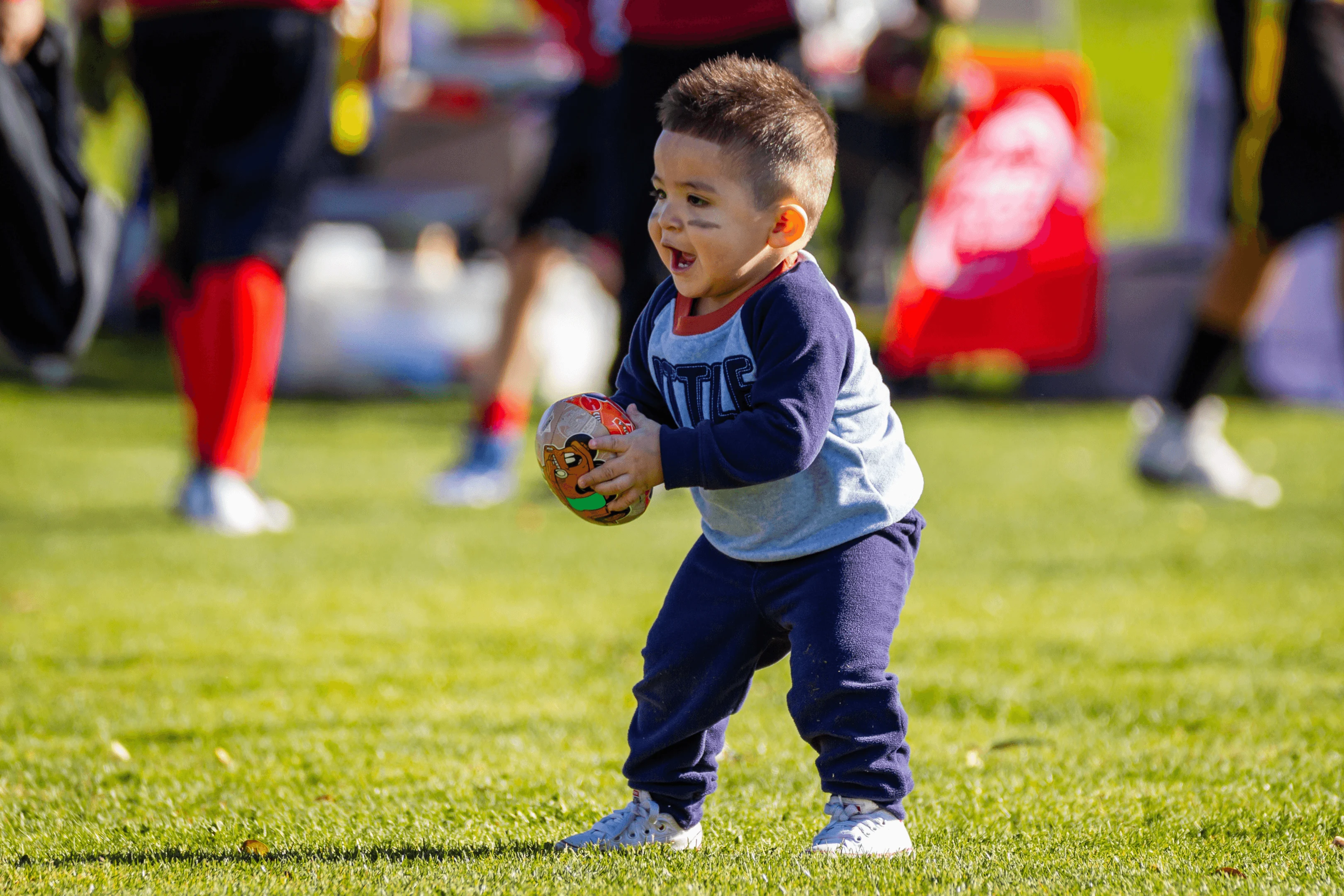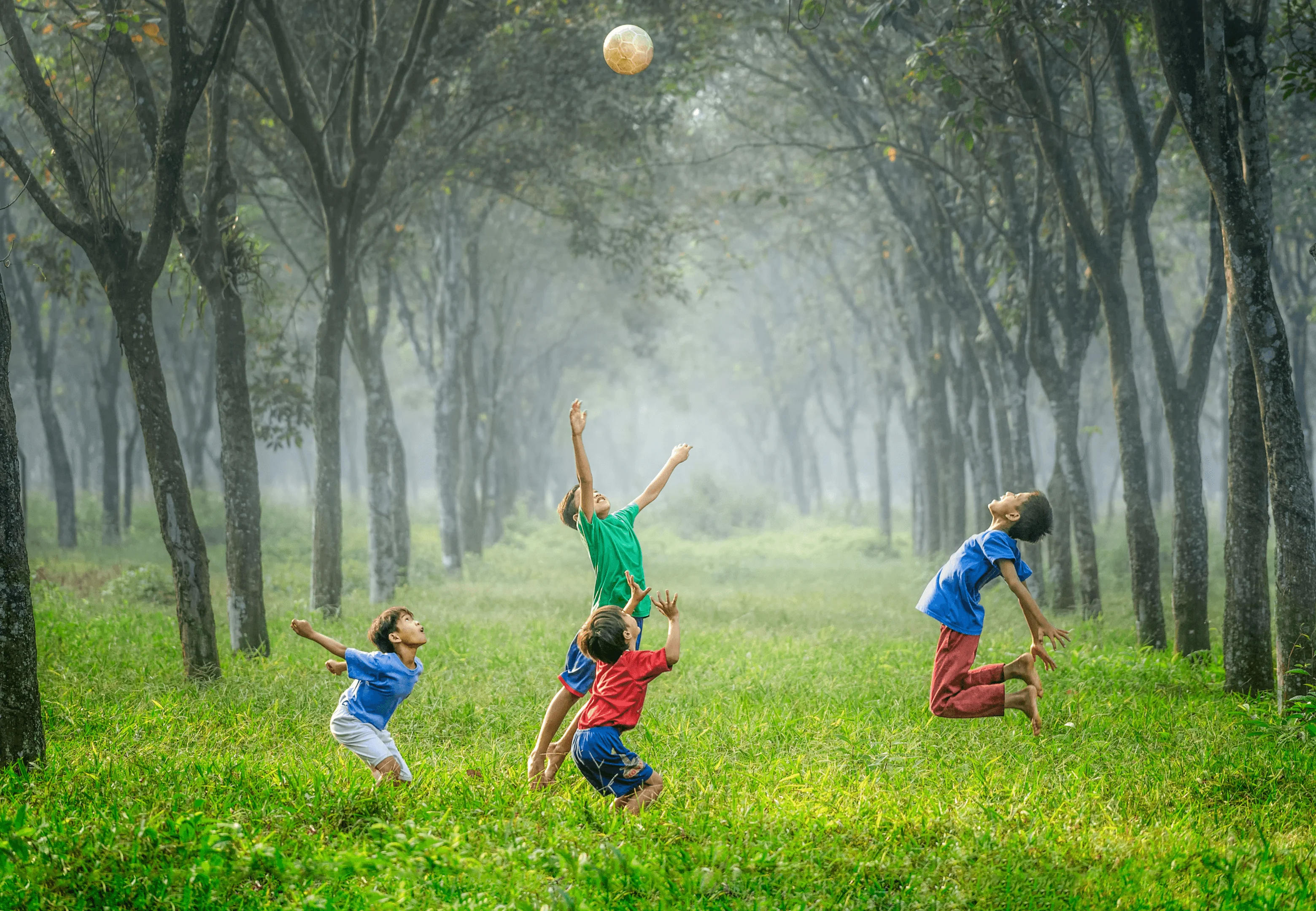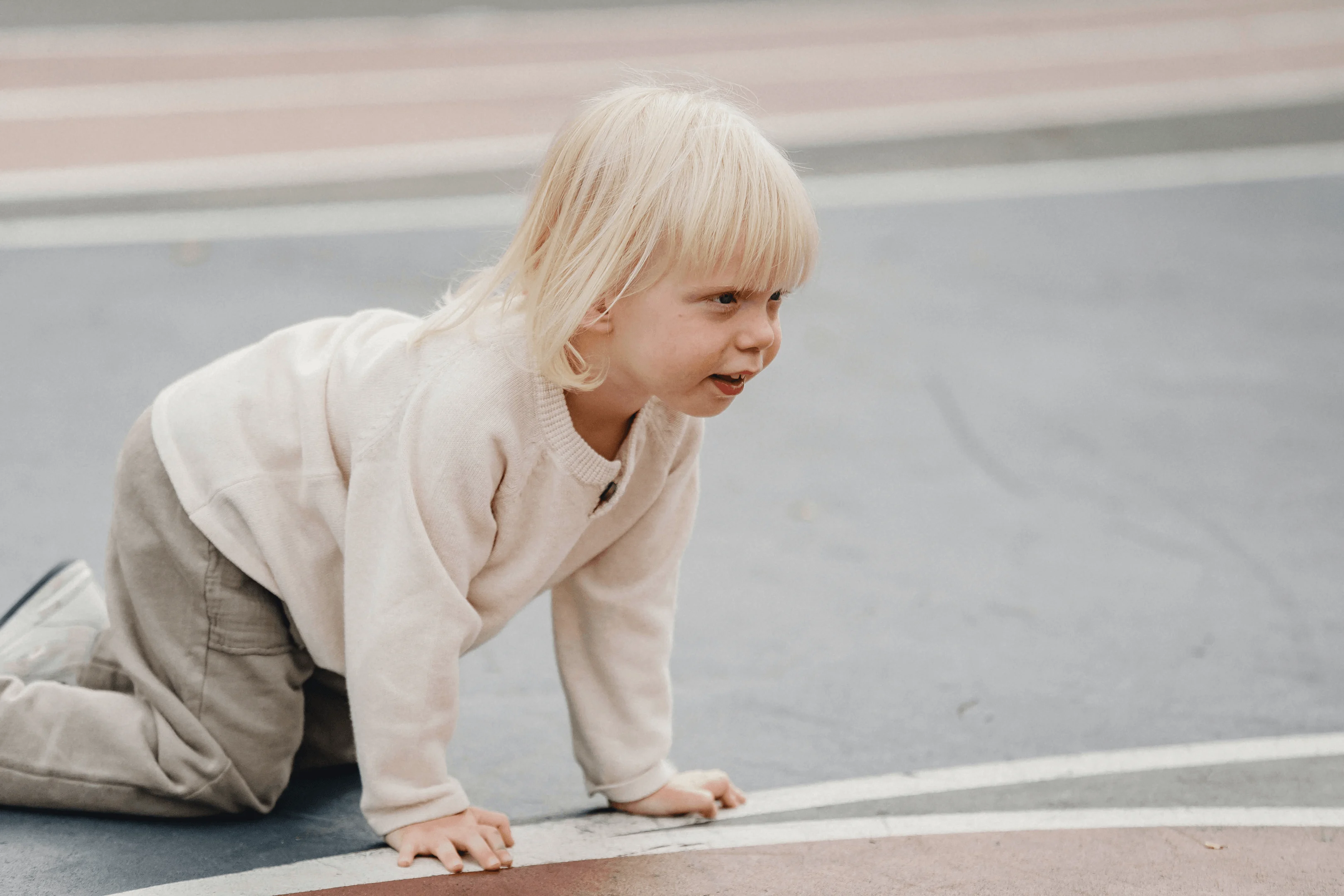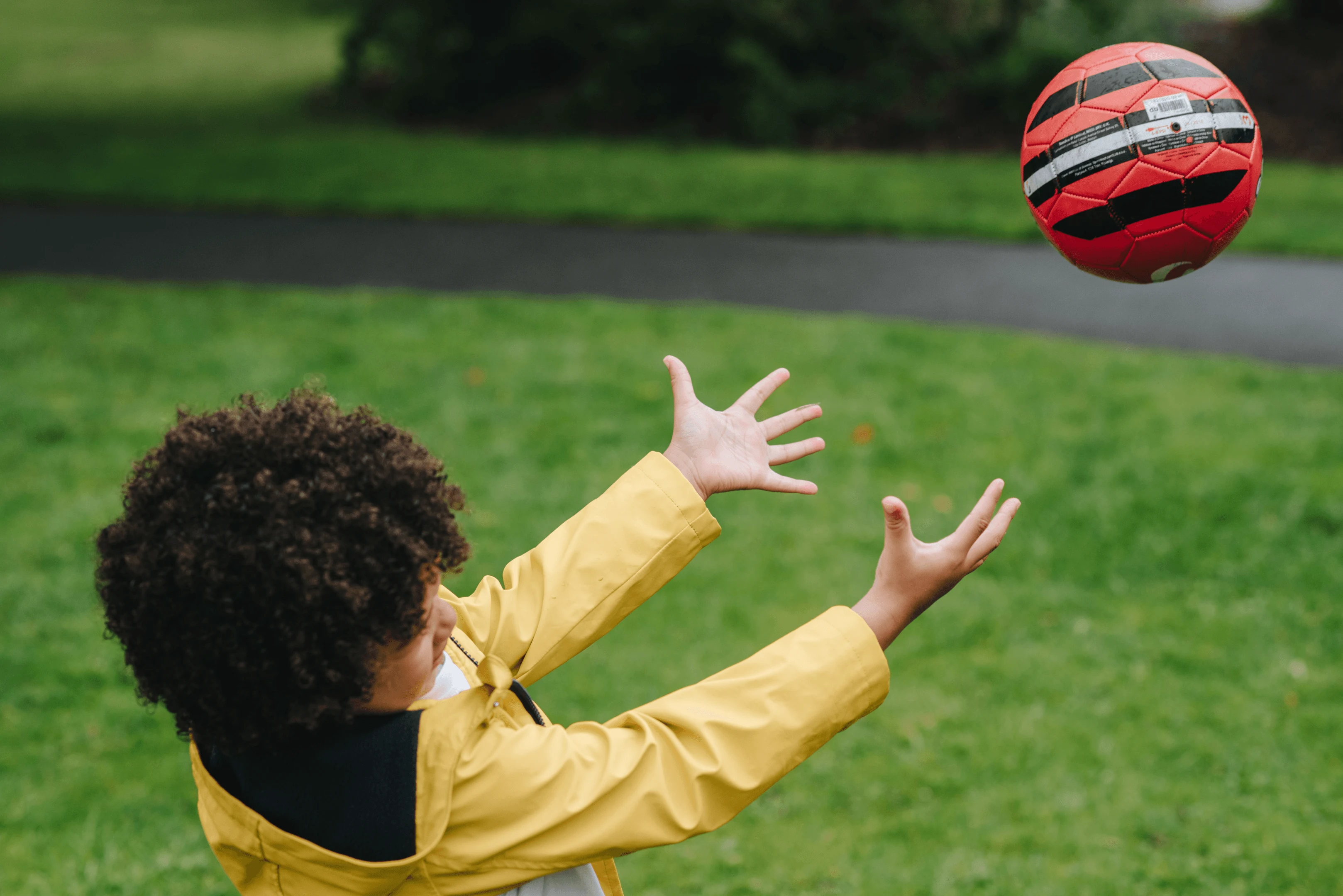What is Physical Literacy?
Physical Literacy is more than just Physical Education or sport. Physical literacy is all about building strong foundations for children so that they become physically active in a wide range of activities as they grow. If you are physically literate, it means you are competent in movement and sports skills, such as running, jumping, skipping, rolling, swimming, throwing, and catching.
Physical Literacy is about giving each child the confidence to move and be active so that they have the physical competence and fundamental movement skills to remain active throughout their lives. And that they have the confidence and independence to take part in the kind of physical activity that interests them.
Why is it important?

Developing physical literacy is very important, as it underpins all learning. Being physically active and using physical movements literally helps to wire the brain by making secure connections between our neural pathways. Children who regularly take part in physical activities often outperform children who have a more sedentary lifestyle.
What’s more… recent research proves that learning to be physically literate is just as important in life as learning to read and write.
What are the benefits of being physically literate?
Promoting physical activity has tons of health benefits that can last a lifetime. Children who are physically literate will:
Usually do well academically
Have great social skills and become team players
Feel happier
Have confidence in themselves and in their bodies
Have the confidence to try new sports
Be more likely to be physically active and so healthier throughout their lives.
For further information on physical literacy development, visit this link.
I’m in! Where do I start?
In just 30 minutes a day, your child can develop physical literacy. Of course, if they want to do more exercise than that, that’s great. Follow the activities below to get started.
In all the activities, the focus should be on having fun and not being too competitive, especially with younger children. Instead, encourage children to build up their own individual skills, having lots of fun as they do so.
1. Walking
It sounds so simple, but walking is the most fundamental traveling action and it forms the basis of many other actions so it’s important to spend a little time getting it right.
Tips:
Stand with your feet together and make sure your whole body is facing forwards.
Stand up straight – feel as though you are being lifted from a piece of rope attached to the top of your head.
Keep your eyes looking directly ahead.
When you take a step, make sure your heel goes down first and moves on the ball of your foot to push off onto the next step.
Keep your arms loose and close to your body.
Try to swing your arms in opposition to your legs.
Keep your movements smooth and continual.
If you spot children who have a clumsy gait or wobble when they walk, try holding their hands to steady them and give them practice crawling. If children have missed out on the crawling stage, they will have missed out on key building blocks in building up their core muscles which can impact their movements and learning later on.
2. Hopping

Hopping is tricky for many early years children, as it involves balance and taking off and landing. It is an important skill to build on for athletic skills, such as the long jump, triple jump, and hurdles.
Tips:
Stand on one leg and bend your knee.
Also slightly bend the leg you are still standing on.
Pull your arms backwards.
Push off from the ball of your foot and swing your arms up to help you with balance.
Keep your head up and look forwards.
Try to land softly on the ball of the foot and hop again, bending your knees.
If you spot children who are flat-footed, you may need to give them more practice in stepping onto their tiptoes. Also, watch out for children who are leaning too far forwards and lose their balance. They may need to work on hopping on the spot before they start to move by hopping.
3. Running
Running is a core skill for athletes. It is basically walking extremely fast so that, at times, both feet leave the ground.
Tips:
Always keep your head up and look forwards.
Lift your knees high and try to kick your bottom with your heels.
Drive your arms backwards.
Try to run on the balls of your feet and keep your heels off the floor.
Use your arms to propel you.
Some children won’t realize that their arms can really help them to run, so encourage them to sit down and pretend to drive along as fast as they can with their arms so that they can feel how our arms can help us move.
4. Crawling

Crawling underpins many early movements. If children are encouraged to walk too early, without moving through the crawling stage, this may result in coordination problems later on. Crawling involves the arms and legs moving in opposite directions.
Tips:
Make sure your hands and feet are flat on the floor before you start.
Feel your strong arms push into the ground.
Reach forward with your hand and move your opposite knee at the same time.
Carry on with your arms and legs moving in opposition to one another.
Move forward in a straight line.
Look out for children who seem to have little muscular strength or balance, as they will need more practice at supporting the weight on their hands. You could give them practice in supporting their weight on their elbows first. Sometimes it’s a good idea to slow the movement down and really concentrate on each action.
5. Jumping
Jumping successfully means you need to be able to take off on one or two feet so both feet are in the air and land on two feet. When early years children are able to leave the ground with both feet, it can be a good indication that they are ready for toilet training, as their muscles are developed.
Tips:
Stand with your feet shoulder-width apart.
Bend both knees together.
Swing both your arms behind you, then up into the air.
Push off with both feet and reach up as high as you can.
Try and keep your head up.
As you land, bend your knees and hips for a soft landing.
Children will usually begin to jump with only one leg leaving the ground at first. You could encourage them to jump with two feet together by placing markers for them to stand on at take-off. Talk about landing as quietly as a mouse on the soft, front part of your feet as this is gentler on the body.
6. Comando crawling

Similar to crawling, commando crawling is crawling on the tummy with your arms and legs working on opposite sides. Just like soldiers do when they are going through a tunnel or under a net. The arms need to pull you along and the legs need to push you along.
Tips:
Start by lying on your tummy.
Pull with your arms and push with your legs.
Try to move the opposite arm to the leg.
Crawl forwards with your head held high.
Sometimes children need a gentle rocking movement to get them started or they may pull themselves along by the arms and forget about their legs. If this happens, slow the action down and exaggerate each movement.
7. Run like a dog
This is about running on your hands and feet. It develops strength and skills that are the foundations for gymnastic moves, climbing, as well as many other fundamental sport skills.
Tips:
Start with both hands flat on the floor.
Support your body on your hands and feet, and arch your back.
Run across the floor on your hands and feet.
Try not to let your bottom go too high, and keep your legs bent.
Encourage the children to keep their heads up so that they don’t bump into anything or anyone, and try to increase the speed of their movements while remembering to move their bodies in opposite movements.
8. Rolling a ball underarm
An underarm roll is an essential skill in many sports. Just think of cricket, tennis, and baseball to name a few.
Tips:
Start by facing forwards with the ball in your hand.
Don’t grip the ball, just have it loosely in the palm of your hand.
Swing the hand that is holding the ball back until your arm is straight.
Step onto your opposite foot and bend at the knees.
Swing your arm forwards, and try to brush the floor with the back of your hand.
Release the ball just in front of your front foot.
If children struggle to roll the ball in a straight line, try drawing lines with chalk, or marking lines with masking tape on the ground.
9. Underarm throw
The next step to rolling, throwing underarm is a natural progression and is a key skill for similar sports activities.
Tips:
Stand facing forwards in the direction you want to throw the ball.
Hold the ball in your hand and step forwards onto the opposite foot.
Swing your throwing arm backwards until it is shoulder height, and then swing forwards.
Release the ball, keeping your arm nice and relaxed.
Release the ball but keep your arm moving in the direction of your target.
For younger children, you may want to start by throwing beanbags and gradually move onto balls.
If the ball seems to fly up into the air, try and encourage them to release the ball a bit earlier.
10. Catching

Catching can be difficult for early years children, as it involves receiving a ball with both hands, tracking the ball with your eyes, and getting yourself into a position where you can catch it safely without dropping it. As such, this needs lots of practice.
Catching is an essential skill for many sports. Netball, rounders, basketball and rugby all involve catching skills.
Tips:
Keep both eyes on the ball.
Don’t stay in the same spot – move your body in line with the ball.
Reach both hands towards the ball and spread your fingers wide.
Keep your hands in a cupped position and try to catch the ball with your fingers.
Close your fingers around the ball and bring it into the body.
Check this link if you would like more information on the stages of physical development.
With younger kids, start with a larger and lighter ball, such as a beach ball or soft ball and gradually work towards a smaller ball. Watch out for those catching the ball against their chest, and try and encourage children to catch with their fingers first. If children flinch when the ball comes towards them, try playing with balloons first until they are more confident.
Remember that all of these activities are about learning new physical skills and the best way to learn is to keep it playful. Some children will naturally grasp the skills straight away, but other children will need to work harder at coordinating their bodies and will need more time and patience as they practice.
